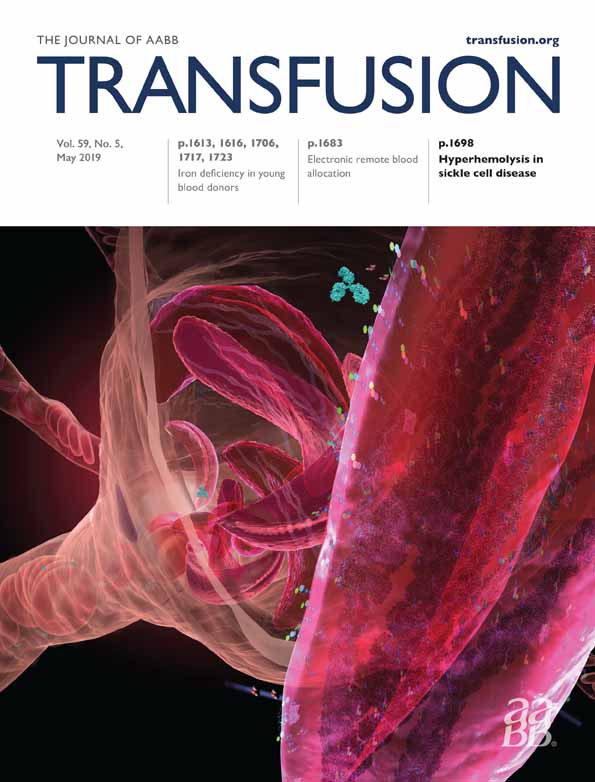Electronic remote blood issue supports efficient and timely supply of blood and cost reduction: evidence from five hospitals at different stages of implementation
Abstract
BACKGROUND
This multicenter international study evaluated electronic remote blood issue (ERBI) for blood unit collection in hospitals.
STUDY DESIGN AND METHODS
Retrospective data were collected from the ERBI software databases and blood bank information systems. Prospective “time-and-motion” data collection methods simulated the delivery of red blood cell units to determine the staff time for each step.
RESULTS
The main benefit of ERBI was found in two hospitals where the blood unit was issued and collected at refrigerators remote from the blood bank (closer to the clinical area) compared with the standard process of blood bank issue (BBI) and blood unit collection in the blood bank. There was a reduction in the time for blood to reach patients (2.02 min compared to 8.43 min at one site [p ≤ 0.0001], 1.57 min compared to 6.54 min at the other [p ≤ 0.0001]). However, there was no reduction in time where ERBI was conducted in the blood bank or where a blood unit issued by the standard BBI was collected at remote refrigerators. In the three hospitals where ERBI was conducted at remote refrigerators, there was an improved issue:transfusion ratio (range of 1.02-1.09 for ERBI compared to 1.48-1.58 for BBI) and a reduction in staff time and costs of between $5,000 and $10,000/year.
CONCLUSION
This multicenter international study builds on findings from studies in single hospitals that ERBI at remote refrigerators improves the efficiency of transfusion by reducing the time taken for blood units to reach patients, staff time, and costs.
CONFLICT OF INTEREST
SMF, PMN, and MFM have served for the Haemonetics Scientific Advisory Council. The other authors have disclosed no conflicts of interest.




